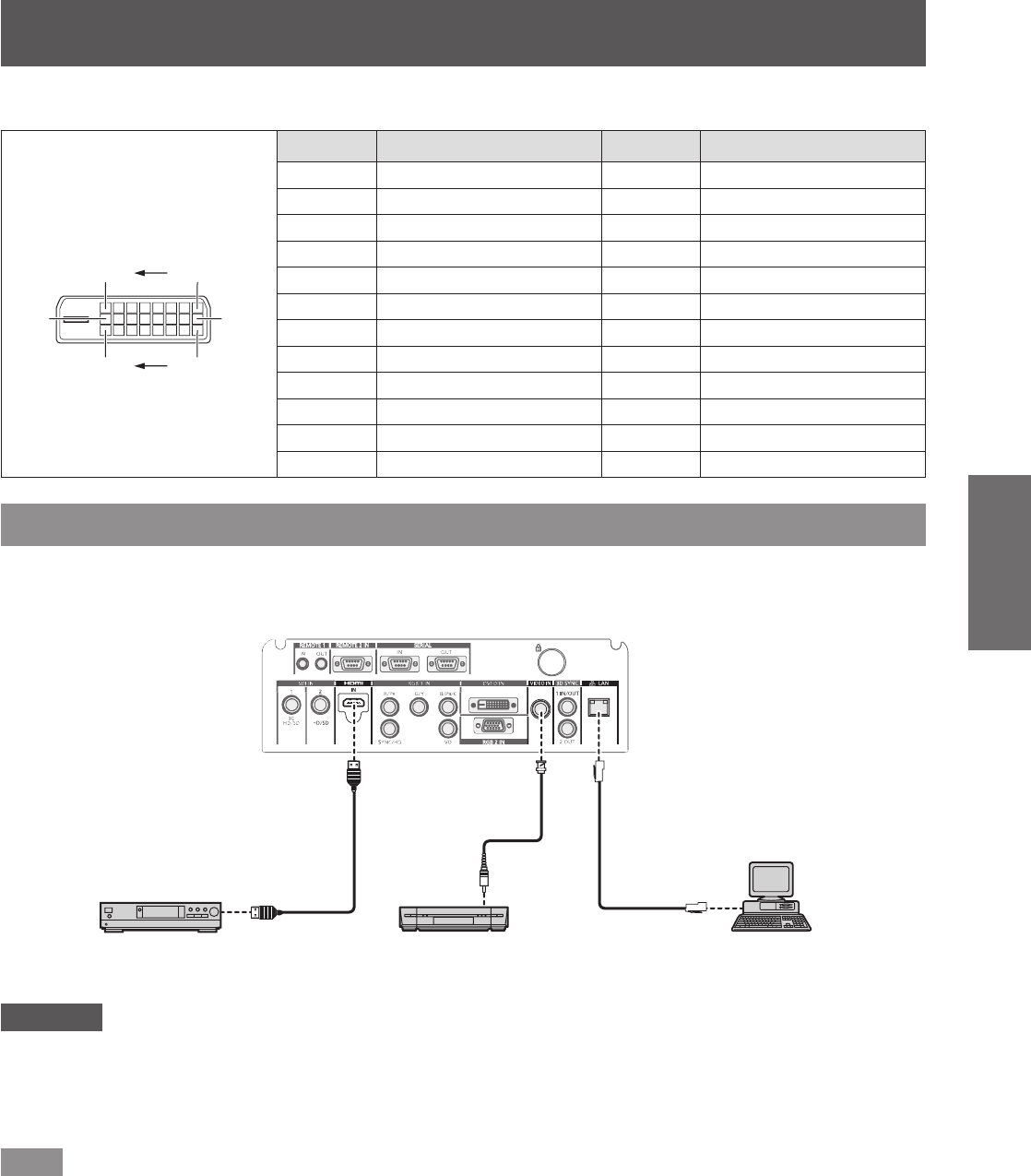
Connecting
ENGLISH - 45
Getting Started
■
<DVI-D IN> terminal pin assignments and signal names
Outside view
Pin No. Signal name Pin No. Signal name
(17)(24)
(16)
(9)
(1)(8)
(1) T.M.D.S data 2– (13) —
(2) T.M.D.S data 2+ (14) +5 V
(3) T.M.D.S data 2/4 shield (15) GND
(4) — (16) Hot plug detection
(5) — (17) T.M.D.S data 0–
(6) DDC clock (18) T.M.D.S data 0+
(7) DDC data (19) T.M.D.S data 0/5 shield
(8) — (20) —
(9) T.M.D.S data 1– (21) —
(10) T.M.D.S data 1+ (22) T.M.D.S clock shield
(11) T.M.D.S data 1/3 shield (23) T.M.D.S clock+
(12) — (24) T.M.D.S clock–
Connecting example: AV equipment
■
For <HDMI IN>/<VIDEO IN>/<LAN> terminals
The following diagram is a connecting example for PT-DZ21KU and PT-DS20KU.
Blu-ray disc player VCR (TBC built-in) Computer for control
Attention
z
Always use one of the following when connecting a VCR.
A VCR with built-in time base corrector (TBC)
A time base corrector (TBC) between the projector and the VCR
z
If nonstandard burst signals are connected, the image may be distorted. In such case, connect the time base
corrector (TBC) between the projector.
Note
z
The <DVI-D IN> terminal can be connected to HDMI- or DVI-D-compliant devices. However, images may not
appear or may not be displayed properly on some devices. (
page 92)
z
The HDMI cable used should be an HDMI High Speed cable that conforms to HDMI standards. If a cable that
does not meet HDMI standards is used, video may be interrupted or may not be displayed.
z
The <HDMI IN> terminal of the projector can be connected to an external device with an DVI-D terminal by
using a HDMI/DVI conversion cable, but some devices may not project the image properly or function properly.
z
The projector does not support VIERA Link (HDMI).


















